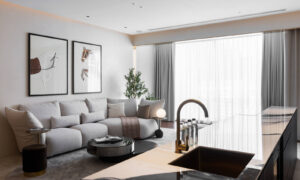Interior design has become an increasingly popular hobby and passion project for many over the past decade. Reality shows, social media, and e-commerce have all fueled rising interest in aesthetically pleasing, functionally optimized home environments. However, trying to execute a beautiful, comfortable interior design without professional help can prove challenging for even the most enthusiastic design lover. Partnering with a knowledgeable interior designer saves time, avoids expensive mistakes, and brings coveted design visions to life. This article will explore why having an interior designer’s expertise in your corner is invaluable as a design enthusiast.
The Critical Role of Interior Designers
Before diving into why design aficionados will benefit from an interior designer’s skills, it helps to define precisely what interior designers do. Interior designers are trained professionals who create indoor spaces that are both visually appealing and highly functional. Their responsibilities span far beyond just decorating. Interior designers must master spatial planning, building codes, material selections, lighting design, project management, and beyond. Additionally, they may also provide expertise in addressing specific client needs and preferences, such as incorporating the latest trends or adapting spaces for particular uses—such as the design of Steven Furtickhouse.
An interior designer’s unique combination of creative vision and technical expertise empowers them to shapespaces tailored to their client’s needs and preferences. Key skills interior designers bring to any project include:
Without this diverse blend of creative talent and technical knowledge, it becomes challenging for design enthusiasts to actualize their own interior design visions.
What Design Lovers Want and Need
To understand the value of an interior designer for design aficionados, it helps to explore the mindset and priorities of design lovers. Those passionate about interior design are drawn to aesthetics, individuality, quality craftsmanship, and self-expression through their living environments. Key preferences include:
However, enthusiast designers often underestimate the complexities of interior design and struggle to achieve their vision solo. Common challenges include:
This is precisely where the value of teaming up with an interior designer becomes evident for individuals who love design. Interior designers make actualizing beautiful, functional home environments easy.
Four Benefits of Having an Interior Designer in Your Corner
Interior designers add expertise that enables design loversto achieve their vision properly on time and on budget. Here are four top benefits of partnering with an interior designer on home projects:
1. Bringing Your Unique Vision to Life
Interior designers have the skills to translate your unique style into a polished, livable reality. They listen to your preferences, inspirations, and vision for each space and create designs that authentically reflect your personality and needs. Rather than settling for an impersonal cookie-cutter design, interior designers make customized spaces you’ll love coming home to.
2. Maximizing Functionality of Your Layout
Beauty aside, interior designers focus on how spaces actually function for your lifestyle. They’ll carefully plan the layout, traffic flow, storage, furnishings, and spatial relationships in ways amateur designers rarely consider. The result is a home allowing you to live and entertain comfortably.
3. Avoiding Common Mistakes & Missteps
Interior design novices often overlook important details, codes, measurements, material specifications, and buying sequences. Designers help steer around these mistakes that lead to budget overages, flawed aesthetics, and functionality issues down the road. Their experience saves you from missteps you’ll later regret.
4. Saving You Time, Stress & Money
Rather than wasting weekends trying to install lighting or build custom cabinetry yourself, let your interior designer handle project management and execution. They’ll oversee everything from hiring contractors to procurement, saving you significant time. You also avoid the stress of having to become a construction expert. This approach is particularly beneficial for HomeImprovement projects.
In summary, interior design lovers are drawn to aesthetically inspiring spaces reflecting their identity and style vision for a reason. However, executing a functional, beautiful interior design independently can prove extremely challenging for enthusiasts without formal training. This leads to easily avoided mistakes, subpar results, and frustrating wastes of time and money.



































